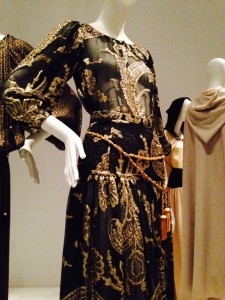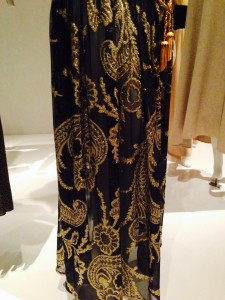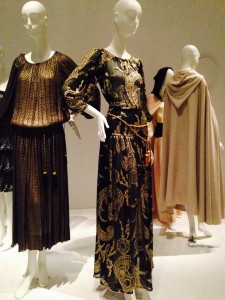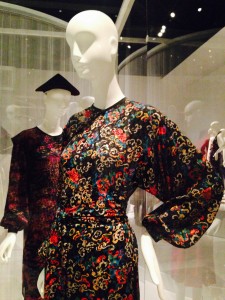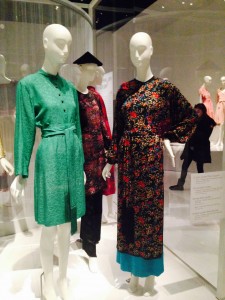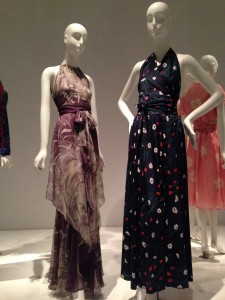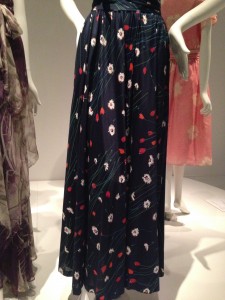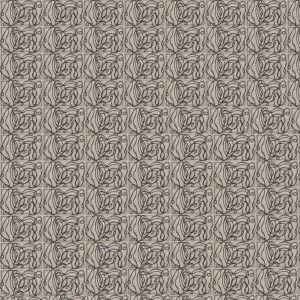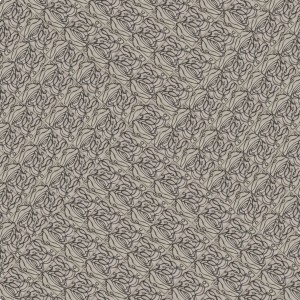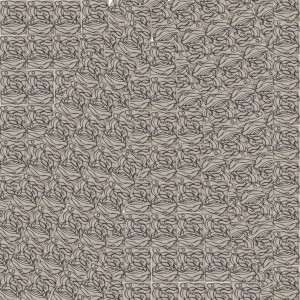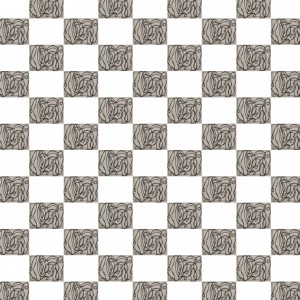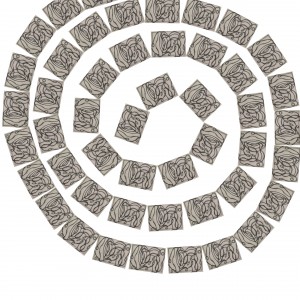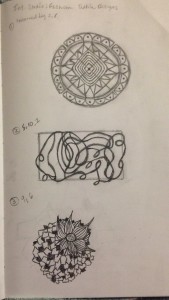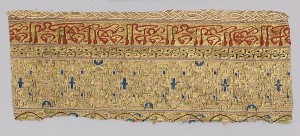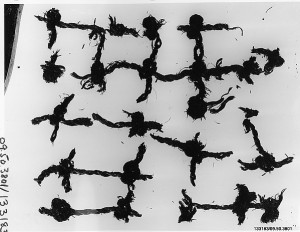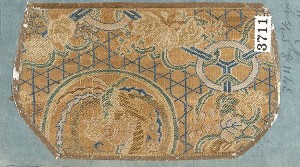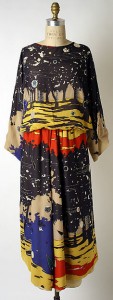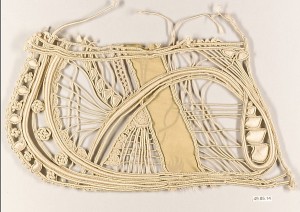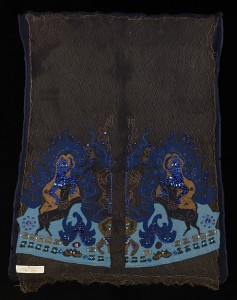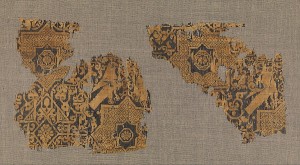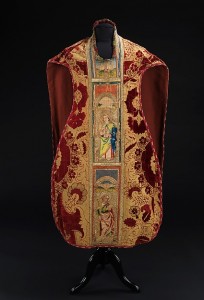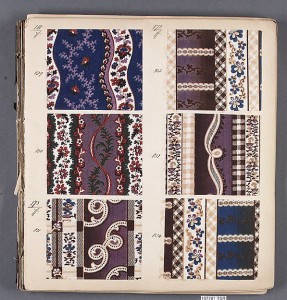Saint Laurent Rive Gauche
Gold and black ensemble, polyester chiffon, 1976, France
Here, the use of pattern is very interesting and pleasing to the eye for many reasons. The gold on black contrast is very appealing to the eye and the art nouveau style pattern draws in the eyes. The pattern is not too wild, but at the same time the viewer follows its eccentric curves and turns over the woman’s body. The draping of the dress is casual, while the pattern of the dress is more evocative of formal wear. The pattern flows over the dress just as the chiffon would flow as the woman walks. This pattern is composed beautifully on the dress so that the eye can follow it complexly and easily while at the same time flattering the woman’s body. The many shapes that are found in this pattern make the viewer linger on it even longer. It evokes a sense of royalty and with the colors it uses and the grandeur size of the shapes.
Yves Saint Laurent
Multicolor and turquoise “Chinese” evening ensemble, printed silk crepe, 1977, Paris.
The “Chinese” pattern of this dress was very popular in its time. The black ground color emphasizes the bright, multicolored, oriental pattern that covers it. The accents of turquoise in the pattern also compliment the turquoise at the bottom of the dress. The design repeats itself, while at the same time it is not clearly repetitive. The same small curves are rotated and connected in different places. This makes the pattern very pleasing to the eye matched with the fact that many colors are utilized. The draping of the dress is also matched with this pattern. The loose sleeve but fitted top reflect the small space that it is left between the pattern and the free flowing curves of the pattern. This dress also is reflective of the art nouveau movement that goes hand in hand with the rise in orientalist inspired patterns that came about in the 20th century. The overlay of the textile over another piece of the textile adds even more depth to the pattern, which is not apparent right away, but upon further and closer gaze on it, it becomes apparent.
Halston
Navy full-length dress, printed knit cotton, circa 1976, New York.
This Halston is free flowing and casual which matches the pattern of multicolored flowers flowing through the wind. This is emphasized even more by how the dress would flow as the woman walks. The contrast of red and white flowers really pop off the dress and the green stems draw the eye from one group of flowers to the next. The pattern of the flowers going up on the upper half of the dress, changes when the dress hits the waist and the flowers begin to point down as the fabric flows down. Both the pattern and the cut of the dress evoke the season of spring and it blurs the line between casual and formal, just like St. Laurent did in the first one. The wrap of the dress around the neck matches the way the pattern of the flowers flow around the dress.
